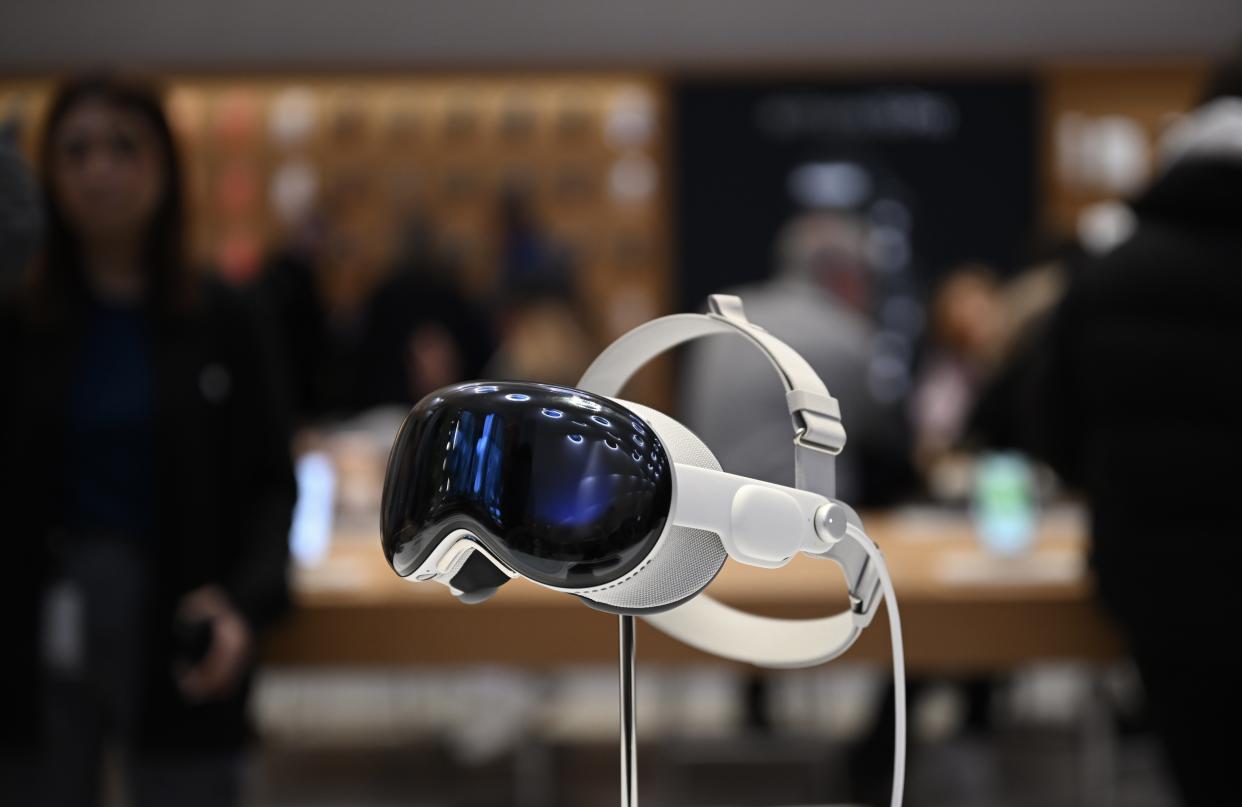Apple is aiming the Vision Pro at enterprises
It’s been just over two months since Apple (APPL) launched its Vision Pro AR/VR headset. At $3,500, the device, which Apple calls a spatial computer, is a pricey proposition for many consumers. But the enterprise market is another beast altogether, which is why the company is keen on showing off the Vision Pro’s business bona fides. After all, if Apple can entice large businesses to purchase Vision Pros in bulk, it would provide a solid boost to overall sales numbers.
Apple has a history of pushing what might seem to be consumer products into businesses. The iPhone is a mainstay of offices around the world, as are its MacBook and Mac lines of laptops and desktops. And while Apple doesn't release numbers for how many of its product sales go toward consumers and how many go toward businesses, having those enterprise clients all but guarantees a continuous stream of upgrades as older devices reach the end of their lifecycles and newer, more powerful ones come to market.
To that end, I sat down for a demo of some of the enterprise use cases for the Vision Pro and came away impressed by what the headset has to offer. Much of what the company offers seemed to provide genuinely worthwhile use cases for workers, though, I'm not a jet engine mechanic, so I can't say for sure.
And while these were enterprise apps, they still managed to feel as immersive as their consumer-based counterparts. Though, I don't expect anyone to start downloading them from the App Store for fun.
Apple isn’t alone in the AR/VR enterprise space. Rival Meta (META) also offers its Meta Quest line of headsets as a business product complete with enterprise-focused administrative software and controls.
Still, demonstrating the Vision Pro's enterprise chops could prove to be a lucrative move for Apple as it ramps up headset sales in hopes of turning the device into a major moneymaker.
Business uses for an expensive headset
During my brief 30-minute demo with Apple, I tried four different apps: SAP Analytics Cloud, Complete HeartX, Resolve, and JigSpace. Each of the apps featured interactive augmented reality functionality designed to help workers do everything from training for specific tasks and studying pieces of equipment they may have to service in the future to getting a better understanding of their business’s overall performance.
The most impressive demo of the bunch was Complete HeartX. The app, developed by Elsevier, is designed to help healthcare workers, such as nursing students, get a better sense of how the heart functions in a living person and how to draw blood.
Users see a fully 3D model of a person and use their hands to pinpoint a spot of the model’s body to reveal the location of blood vessels, veins, and the heart. The app also offers a 3D model of a beating heart that helps users better understand how blood flows throughout the body.

SAP Analytics Cloud, meanwhile, allows users to view datasets in a 3D environment, making them easier to digest than simply reading them on a spreadsheet. The demo I saw involved viewing a corporate headquarters with small pegs floating above each building.
Looking at a building and tapping my fingers together pulled up the number of employees that worked in each building on specific days. It also provided a breakdown of how many people parked at the complex’s parking garages and whether they drove EVs or traditional gas-powered cars.
The Resolve app allowed me to view a schematic of an HVAC system and then see a digital version of it at scale above me. The idea is to give HVAC workers a sense of where things like air ducts and sprinkler heads are located before going to a job site, so they don't have to waste time searching while on the job.
Then there was my demo of JigSpace, which entailed placing a massive jet engine in a room and pulling it apart by staring at individual pieces to select them and tapping my fingers together to tear them out.
Each of the demos offered excellent visuals and interactivity, but I didn’t see anything that other headsets don't offer. I’ve used AR/VR devices in the past to perform faux surgery on 3D models of people, look at accurate representations of things like cars and planes, and more.
The Vision Pro does, however, bring along an incredibly easy-to-use interface, interoperability with other Apple devices, and an overall cleaner operating system. If Apple can convince a relatively small number of businesses to purchase the Vision Pro, it could give the headset a nice sales boost.
We’ll likely get some inkling as to overall Vision Pro uptake when Apple announces its second quarter earnings in the coming weeks.
Email Daniel Howley at dhowley@yahoofinance.com. Follow him on Twitter at @DanielHowley.
Click here for the latest technology business news, reviews, and useful articles on tech and gadgets
Read the latest financial and business news from Yahoo Finance.

